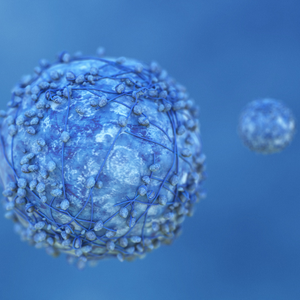Pancreas Cancer

The vast majority (95%) of pancreas cancers arise in the lining cells of the ducts within the pancreas gland. These types of cancers are called pancreatic adenocarcinoma or exocrine pancreas cancer. Most pancreatic cancers spread to nearby organs early in the course of illness making it uncommon to detect the cancer at an early stage.
Once a cancer is diagnosed, the next step is to stage (I-IV) the cancer with a combination of tests which can include CT, MRI, or endoscopic ultrasound, as treatment of cancer and prognosis depends on the stage.
Risk Factors
- Cigarette smoking.
- Diabetes.
- Obesity.
- Older age.
- Family history of pancreatic cancer or hereditary cancer syndromes.
- Chronic pancreatitis (chronic inflammation and scarring of the pancreas).
- High-risk pancreatic cysts such as mixed/main-duct IPMN, high-risk branched duct IPMN, or mucinous cystic neoplasm.
Symptoms
- Pain in the upper abdomen that radiates to your back.
- Loss of appetite or unintended weight loss.
- Jaundice (yellowing of the skin and the whites of the eyes).
- New-onset diabetes or worsened sugar control with existing diabetes.
- Blood clots.
- Fatigue.
- Depression.
Treatment
The goal of treatment can be to eliminate all cancer or delay the progression of disease and improve the quality of life. Treatment depends on several factors:
- Stage of the cancer.
- Location of the cancer.
- Overall health.
- Personal preference.
Treatment usually includes a combination of surgery, chemotherapy and at times, radiation therapy. Additionally, other supportive measures such as management of weight loss, pain control (by pain medication or by injecting alcohol into the nerves that control pain in the abdomen called celiac plexus neurolysis), relief of jaundice due to blockage of bile duct (done by placement of drain tube or stent during a procedure called endoscopic retrograde cholangiopancreatography or ERCP) and relief of small intestine blockage by tumor growth (by placement of a stent or surgery to bypass the blocked part of the intestine).
FAQs
Symptoms of pancreatic cancer can include abdominal pain, jaundice (yellowing of the skin and whites of the eyes), nausea and vomiting, weight loss, and changes in bowel habits. However, some people with pancreatic cancer do not have any symptoms until the disease is advanced.
Pancreatic cancer is usually diagnosed with imaging tests, such as CT scan or MRI, and a procedure called endoscopic ultrasound (EUS). EUS involves inserting a thin tube with an ultrasound probe into the digestive tract to get a close-up view of the pancreas. A biopsy, which involves removing a small sample of tissue with a needle for laboratory testing, may also be performed to confirm the diagnosis.
Treatment for pancreatic cancer depends on the stage of the disease and the person’s overall health. Options may include surgery, chemotherapy, radiation therapy, or a combination of these treatments.
There is no known way to prevent the development of pancreatic cancer. However, maintaining a healthy lifestyle, including not smoking and getting regular exercise, may reduce the risk of the disease.
In some cases, pancreatic cancer may be hereditary. Certain genetic conditions, such as inherited mutations in the BRCA1 and BRCA2 genes, can increase the risk of pancreatic cancer. However, most cases of pancreatic cancer are not hereditary.
The survival rate for pancreatic cancer depends on the stage of the disease at the time of diagnosis and the person’s overall health. If the cancer is detected at an early stage, the survival rate may be higher. However, pancreatic cancer is often not diagnosed until it is at an advanced stage, which can lower the chances of survival. Overall, the 5 year survival rate is unfortunately still quite low.
Pancreatic cancer can sometimes be cured with surgery if the cancer is detected at an early stage and has not spread to other parts of the body. However, most cases of pancreatic cancer are not diagnosed until they are at an advanced stage, which can lower the chances of a cure. In these cases, treatment may be aimed at controlling the cancer and improving the person’s quality of life.
Medications, such as chemotherapy and targeted therapies, may be used to treat pancreatic cancer. These medications may be used alone or in combination with surgery or radiation therapy.
Yes, there are clinical trials for pancreatic cancer that are researching new treatments and therapies. Clinical trials are research studies that involve people and are designed to evaluate the safety and effectiveness of new treatments. Participation in a clinical trial is voluntary and may be an option for some people with pancreatic cancer.
Some of the known risk factors for pancreatic cancer include smoking, a family history of pancreatic cancer or certain genetic conditions, being over the age of 60, having diabetes, and being obese.
Pancreatic cancer can sometimes be detected early or incidentally through tests, such as CT scans or MRI, done to look for other problems. However, pancreatic cancer is often not diagnosed until it is at an advanced stage, which can lower the chances of survival.
Maintaining a healthy lifestyle, including not smoking, getting regular exercise, and eating a healthy diet, may reduce the risk of pancreatic cancer. However, it is not known if these lifestyle changes can completely prevent the disease.
Yes, pancreatic cancer can spread (metastasize) to other parts of the body, such as the liver, lungs, or bones. This can occur through the blood or lymphatic system.
Yes, there are several support resources available for people with pancreatic cancer and their families. These may include support groups, online resources, and advocacy organizations that can provide information, support, and assistance. It may be helpful to speak with a healthcare provider or a cancer support specialist to learn more about the available resources.